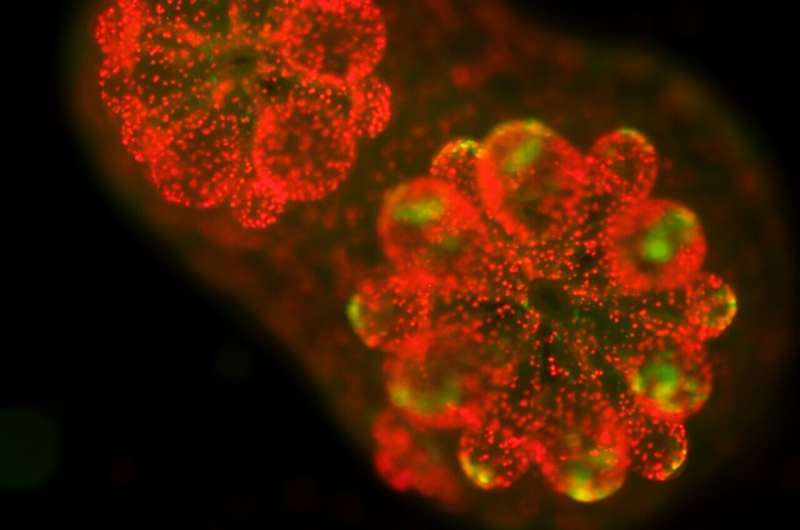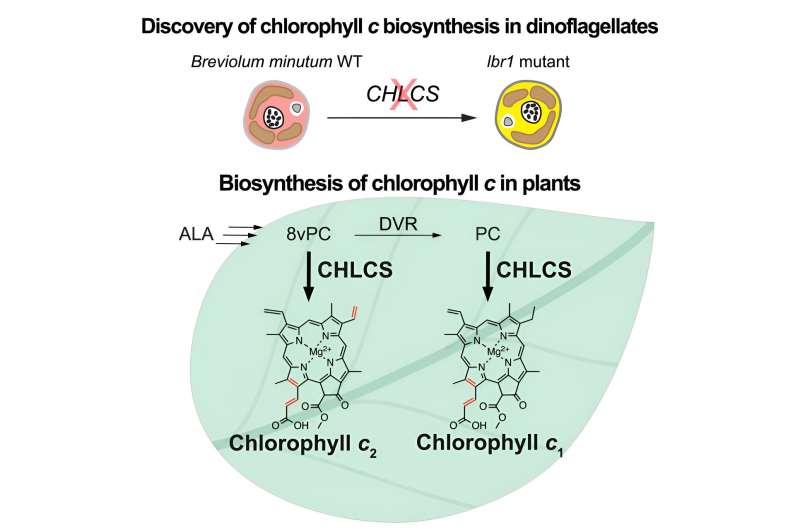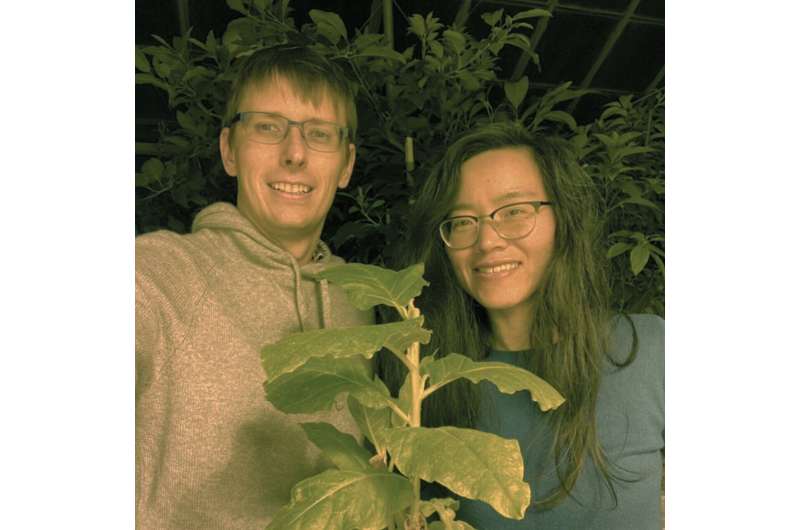This article has been reviewed according to Science X's editorial process and policies. Editors have highlighted the following attributes while ensuring the content's credibility:
fact-checked
peer-reviewed publication
trusted source
proofread
Marine algae implants could boost crop yields

Scientists have discovered the gene that enables marine algae to make a unique type of chlorophyll. They successfully implanted this gene in a land plant, paving the way for better crop yields on less land.
Finding the gene solves a long-standing mystery among scientists about the molecular pathways that allow the algae to manufacture this chlorophyll and survive.
"Marine algae produce half of all the oxygen we breathe, even more than plants on land. And they feed huge food webs, fish that get eaten by mammals and humans," said UC Riverside assistant professor of bioengineering and lead study author Tingting Xiang. "Despite their global significance, we did not understand the genetic basis for the algae's survival, until now."
The study, published in Current Biology, also documents another first-of-its-kind achievement: demonstrating that a land plant could produce the marine chlorophyll. Tobacco plants were used for this experiment, but in theory, any land plant may be able to incorporate the marine algae gene, allowing them to absorb a fuller spectrum of light and achieve better growth.

Chlorophyll is a pigment that enables photosynthesis, the process of converting light into "food," or chemical energy. Plants produce chlorophyll a and b, while most marine algae and kelp produce c, which enables them to absorb the blue-green light that reaches the water.
"Chlorophylls b and c absorb light at different wavelengths," said Xiang. "The ocean absorbs red light, which is why it looks blue. Chlorophyll c evolved to capture the blue-green light that penetrates deeper into the water."
An additional application of this research could be in the production of algae biofuels. There are a few algae species that produce chlorophylls a or b like land plants, instead of c. Imbuing those algae with the gene to make chlorophyll c could also enhance their ability to use more light and increase their growth, creating more feedstock for the fuels.
The researchers initially set out to gain insight into an algae species that lives in coral. These algae manufacture sugars and share them with their coral hosts. "Each coral colony has thousands of polyps, and their brown color is from the algae. Whenever you see coral bleaching, it's due to the loss of the algae," Xiang said.

Interested in how the algae's ability to do photosynthesis would affect the coral, the researchers worked with mutant algae as an experiment. These rare mutants were more yellow in color than their brown relatives and were unable to perform photosynthesis. They found, unexpectedly, that in coral, these mutant algae were still able to live and grow because the coral gives the algae sustenance to grow.
As luck would have it, by using next-generation DNA sequencing and a lot of data analysis, the researchers were also able to use the mutants to discover the gene responsible for chlorophyll c production. "Discovering the chlorophyll c gene was not the initial goal of our work. We made the mutants for another reason, but I guess we were just lucky," Xiang said.
With new insight into the genetic basis for producing chlorophyll c, the researchers are hopeful that the work could eventually help stem the tide of coral bleaching seen worldwide. Furthermore, there are land-based applications that could help people adapt to climate change.
"The identification of the biosynthetic pathway for chlorophyll c is more than a scientific curiosity; it's a potential game-changer for sustainable energy and food security," said Robert Jinkerson, UCR chemical engineering professor and study co-author.
"By unlocking the secrets of this key pigment, we're not only gaining insights into the lifeblood of marine ecosystems but also pioneering a path towards developing more robust crops and efficient biofuels," Jinkerson said.
More information: Robert E. Jinkerson et al, Biosynthesis of chlorophyll c in a dinoflagellate and heterologous production in planta, Current Biology (2023). DOI: 10.1016/j.cub.2023.12.068
Journal information: Current Biology
Provided by University of California - Riverside





















